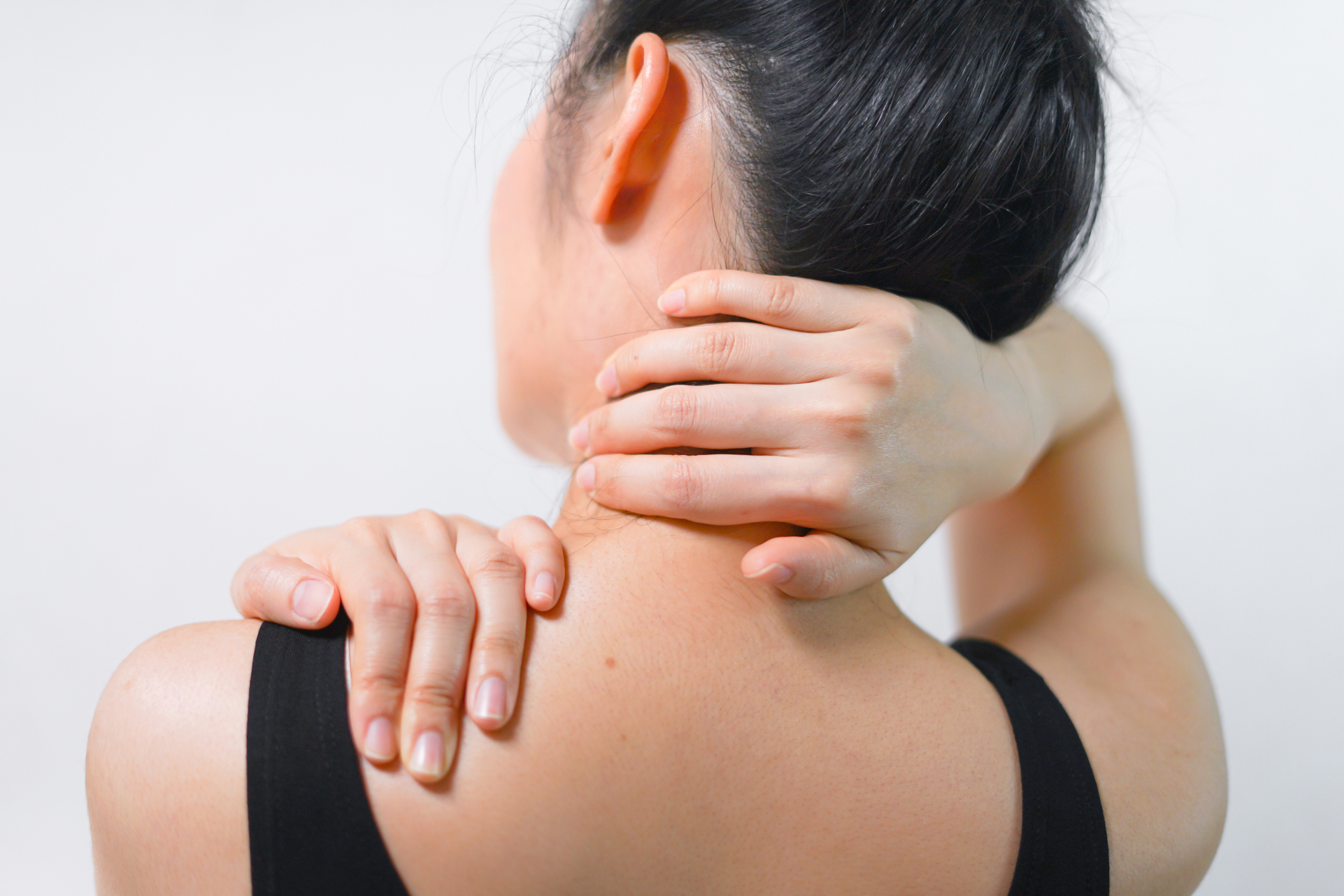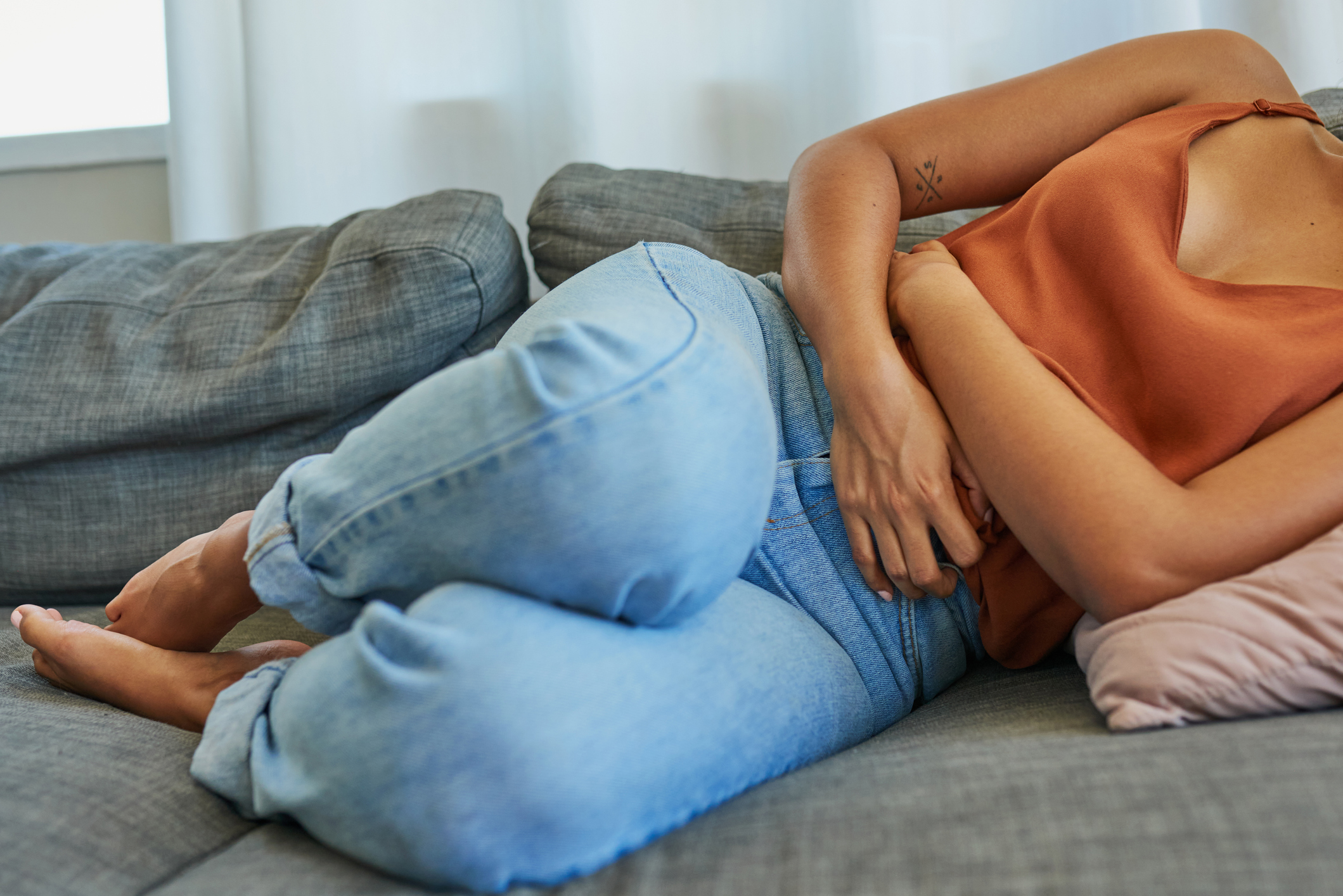You asked, we answered: does living with chronic pain impact women more than men?
Did you know? 70% of chronic pain sufferers are women, yet 80% of pain studies are conducted on male mice or human men.

Did you know? 70% of chronic pain sufferers are women, yet 80% of pain studies are conducted on male mice or human men.
Living with chronic pain can be debilitating, all-encompassing, and personality-defining, to say the least.
One British Medical Journal paper indicates that 8 million people in the UK - 70% of whom are women - are living with chronic pain every day. It's a part of their identity, who they are, and how they live their lives.
So why, then, if 70% of those in pain are women, are 80% of studies into chronic pain treatments and symptom relief - that's over three quarters - conducted on men?
We've enlisted the help of Dr. Abigail Hirsch, clinical psychologist and co-founder of Lin Health, a new chronic pain management platform, to get her take. Dr. Hirsch creates custom treatment programs for women who are diagnosed with chronic pain and believes she knows why women have been left out of the research for so long. Don't miss our guides to endometriosis diagnosis, irregular periods, and exhaustion symptoms, while you're here.
Living with chronic pain: your guide
As our expert-led explainer on the many chronic stress symptoms highlights, living with any chronic condition - be it stress or pain - can feel debilitating.
As Hirsch explains, you all get injured from time to time and usually, the pain ends when the injury heals - generally in the ballpark of between three to six months. "Your bodies are actually quite remarkable in their ability to heal damaged tissue - but for many people, pain persists long after the body has healed. This happens because of changes in the brain’s pathways," she shares.
Celebrity news, beauty, fashion advice, and fascinating features, delivered straight to your inbox!

How so? Well, your brain is very good at learning - that's one of its main jobs, she explains. "That said, sometimes the brain can get a bit overzealous and end up learning to signal pain when it isn’t supposed to," she adds.
New medical diagnostic guidelines released to the medical community in January 2022 designate this type of pain as chronic primary pain, she continues. "Some of the most common chronic primary pain presentations include fibromyalgia, lower back pain, shoulder pain, migraines, irritable bowel syndrome, and many arthritic presentations."
Why is chronic pain more prevalent in women?
So, we know chronic pain is common - but did you know it's much more common in women than men? So, question: how, and why? "Why women experience chronic pain more than men is unclear, but we do know that women’s experience in seeking treatment for chronic pain is very different from that of males," Hirsch explains.
How so? Firstly, women express pain differently than men. "According to the International Association for the Study of Pain, psychosocial factors like gender roles, pain coping strategies and mood can influence how pain is perceived and communicated," explains Dr. Hirsch.

Similarly, as above, 70% of people diagnosed with chronic pain are women, but did you know that only 20% of all pain specialists are female? "This means that the vast majority of females are interacting with male pain specialists and fielding questions from men who have a different understanding of the female experience," the expert shares.
Why has more research been done on men?
Good question - and one that female experts within the chronic pain industry have been asking for a while. "We’ve come a long way, but we still have a long road ahead of us,2 emphasises Hirsch. Why? Because she believes gender bias is prevalent across all medical research and that women are underrepresented in clinical trials and within the medical community at large.
"This isn’t necessarily intentional, it’s interesting that this has often been the case in animal studies as well," she points out. "While there are many findings which are universal, and not gender-dependent, without research that is balanced by gender, and other demographic or ethnic factors as well, we will miss the places where there are differences - and these differences can end up being extremely meaningful when research filters down to the level of clinical care."
As you'd likely guessed, the majority of research and medical instruction in 2022 is still sadly based on the male body and male experience. Why? Because women weren't allowed to attend school until the late 1800's - Elizabeth Blackwell became the first woman to graduate from an American medical school in 1849, meaning education was largely male-centric. Only in 2018 did women begin entering medical school in proportion to our representation in the general population. "Bear that in mind and it's not surprising that there are still incredible gaps and gender disparities in research as well," stresses Hirsch.
How do we make chronic pain more gender-neutral?
Strive for more inclusive research, take women's perspectives into consideration, and focus on the types of pain that are specific to women, advises Dr. Hirsch.
"We also need to offer more female pain coaches to help women, which is why I make sure that at Lin Health we are actively recruiting at least 50% females to our medical, coaching, and clinical teams," she emphasises.

10 tips for living with chronic pain, according to the expert
1. It’s not in your head
No doctor should ever tell you your pain is in your head, not real, or something you’ve made up, shares Dr. Hirsch.
"Your pain experience is real - full stop," she stresses.
2. It’s not a symptom
Chronic primary pain is a chronic disease, not a symptom, she goes on. "It’s also highly treatable," she explains.
Try this: Seek out treatment that will support you for the long haul, through the ups and downs, as you get this disorder under control.
3. One diagnosis might explain it all
FYI, one diagnosis makes more sense than multiple diagnoses, shares the expert.
"If you have or have had several pain or discomfort related experiences - migraines, irritable bowel syndrome, musculoskeletal pain, burning or electric sensations, fatigue and so on - it's more likely that you have primary pain (one diagnosis) than that your body is continually breaking down with a slew of new issues," she explains.
Good to know.
4. There is good news
Did you know? Primary pain is actually a good news diagnosis. Why? Because pain retraining techniques are extremely effective, shares the expert.
"In a recent study, 98% improved and three out of four people with primary pain were able to achieve pain-free or nearly pain-free status. There's hope," she adds.
5. It’s not in your head - but there’s a good chance it’s not in your body either
Fun fact: just because you have pain, does not mean you have tissue damage.
"In fact, most persistent pain occurs with minimal or no tissue damage. Primary pain always has a multifactorial, bio-psycho-social aetiology," she shares.
6. Consider your intervention options
Recognize the myth that pain is best treated with pills, interventions, or surgeries, she stresses.
"Primary pain is best treated with interventions that start by addressing the psychological and social aspects of pain," she highlights.
7. You can unlearn pain
Sure, you can’t just talk your pain into going away, but you can learn your way out of pain.
How so? Well, primary pain is fueled by a process called centralised sensitisation. "This means that your central processor (aka your brain) learns to be more sensitive to pain signal triggers in what's known as a learned shift," she explains.
What can be learned can also be unlearned, too.
8. Look after yourself
Know this: while it might not feel like it at times, you are more than just your pain. "All of your needs deserve to be treated with care and love," she shares.
Try this: Create a list of the things that bring you joy and commit to incorporating them regularly into your life (our self care ideas might just help). "The research is clear that keeping these things in your life is one essential tool for keeping pain at bay," Hirsch explains.

9. Focus on your loved ones
Communicating clearly with your loved ones and friends might not be the first thing that springs to mind when you think of managing your own chronic pain, but by making sure that you’re expressing the difficulties you face, they'll at least know what you’re going through.
"At the same time, when all your conversations are about pain, it’s likely that you will, quite accidentally, end up experiencing more pain. Focus more on the things you love and treasure about those in your life," recommends Dr. Hirsch.
10. Remember that it's just weather
And finally, the doctor advises keeping your eyes on the whole picture.
Try this: Think of the hard times as “weather” that shifts from hour to hour, she advises. "When pain is high, it can be easy to sink into a despondent state and feel like things will never change; like a rainy day where it feels like the sun will never shine again," she explains. "Try to recall the ebb and flow of your pain over time, remind yourself that it’s just weather. If pain is high now, it will almost certainly be lower in the future."

Ally is Marie Claire UK's Senior Health and Sustainability Editor, a well-regarded wellness expert, ten-time marathoner, and Boston Qualifying runner.
Utilising her impressive skillset and exceptional quality of writing, she pens investigative, review and first-person pieces that consistently demonstrate flair and originality.
As well as writing, Ally manages a team of freelancers, oversees all commissioning and strategy for her pillars, and spearheads the brand's annual Women in Sport covers, interviewing and shooting the likes of Mary Earps, Millie Bright, and Ilona Maher. Shortlisted for three BSMEs and winning one in 2022, Ally lives and breathes her verticals: her eye for a story and connections within the wellness sphere are unrivalled. Follow Ally on Instagram for more.
